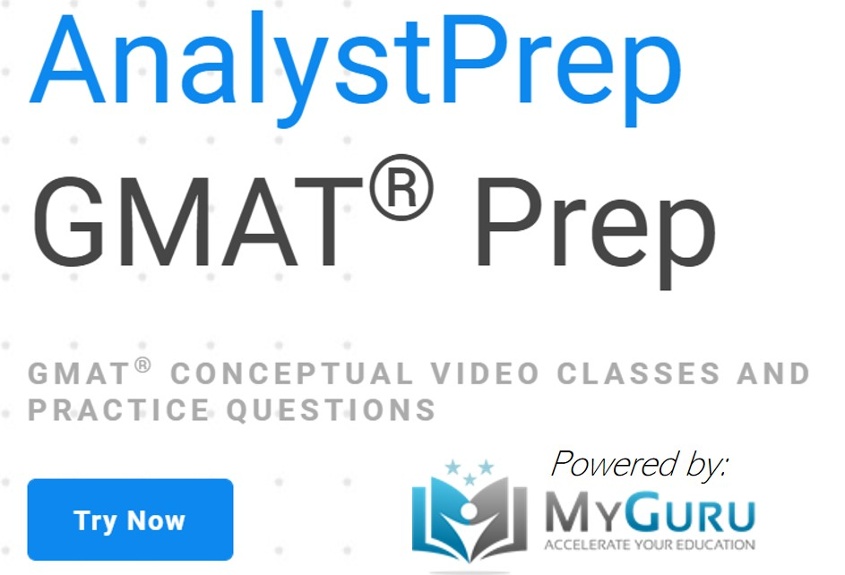GMAT tutoring can be expensive. It takes time. You only engage in it if you expect a positive result, of course. But are there things you can do to improve the experience? To dig deeper into what students can do to get the most out of the private GMAT tutoring experience, we asked one of our most experienced private GMAT tutors to describe how a tutor can add value to the GMAT prep process.
Read MoreGMAT & MBA Admissions Blog
Mark Skoskiewicz
Recent Posts
“Should I take the GRE or the GMAT” is one of the more frequent lines of questioning we get from students considering working with a GRE tutor. Everyone wants to know if their application is negatively impacted by the decision to submit a GRE score instead of a GMAT score. In this article, we’ll offer our brief thoughts on the question.
Read MoreTags: GRE Verbal, studying for the GRE, GMAT, improving your gmat score, GMAT vs. GRE
Before evaluating whether you might benefit from working with a GMAT tutor, you should make sure you understand what the GMAT is all about. To that end, we'll give a quick GMAT overview. Again, a helpful starting point is to realize that it’s not an IQ test. It’s a test of critical thinking and problem-solving skills that can be prepared for. That said, it’s also not as many students assume, only, or even primarily, a test of mathematics, reading, and English language ability. The GMAT uses those concepts to measure problem solving and critical thinking. In fact, too many GMAT prep companies drill students on math problems and English grammar unnecessarily. The GMAT quantitative (or "quant" for short) section, for example, is not a pure math exam. It’s a test of reasoning skills that uses high school level math concepts.
Read MoreA decade ago, although they were available, few would consider an online MBA. Certainly, if you were looking for an “elite” MBA from a top 20 program, it was almost out of the question. But now online MBAs are becoming more popular, even for those looking for degrees from highly selective programs. Should you consider an online MBA? Let’s explore.
Read MoreTags: MBA programs, online MBA
Understanding GMAT Critical Reasoning Strategies
Posted by Mark Skoskiewicz on March 21, 2022 11:00:00 AM CDT
The Verbal Reasoning Section of the GMAT consists of 3 question types: Reading Comprehension, Critical Reasoning, and Sentence Correction. In this article, we’ll be discussing the methodology necessary to address critical reasoning questions. Generally speaking, these kinds of questions are formatted as a set of facts followed by a conclusion. Designed to measure your logical thinking ability, CR questions require that you assess an argument’s premises to either strengthen or weaken it. To help you master this process, we’ll cover the following foundational elements:
Read MoreTags: GMAT tips, GMAT, GMAT problem solving, online gmat
Any good GMAT tutor provides a wide range of problem-solving strategies for the GMAT. While the GMAT is, as a general rule, a test of problem solving and critical thinking ability, here we are talking about the problem-solving question type itself on the quantitative section of the GMAT.
Designed to measure your mathematical ability, the Quantitative Reasoning portion of the GMAT consists of 31 multiple choice questions that must be completed within 62 minutes. The two kinds of problems in this section pertain to data sufficiency and problem solving. In this article, we’ll be covering the strategies necessary to gain mastery of the problem solving questions. More specifically, we’ll cover the following foundational elements:
● How to identify problem solving questions
● Strategic implications of problem solving questions
● Simple and complex problem solving processes
How to Identify Problem Solving Questions
The most useful clues for identifying problem solving questions are frequency and format. More specifically, problem solving questions meet the following criteria:
● Approximately 50% of 31 Quantitative Questions
● Always Five Options and One Correct Selection
● Choices can be Either Numeric Values or Variables
Strategic Implications
Once you’ve identified a problem solving question, you would be well advised to take the following strategic measures:
● Note the format of your answer choices to select an efficient approach & enable savvy mental calculation
● For example, if your answer choices are presented in fractions, you should conduct your calculations in fractions as well. Having to translate between fractions and decimals will cause you to waste time unnecessarily.
● Maintain a 2 minutes per question average. Because questions vary in terms of difficulty, however, you can spend a maximum of 3 minutes on the harder ones.
● Check your pacing after every 10 questions. You should not be timing yourself constantly as that will distract you. By checking at predefined intervals, you can allow yourself to really focus on the work instead of anxiously checking the clock. Keep in mind that due to the way the computer adaptive way the exam is designed, performing well on the first ten questions will give you a competitive edge. For this reason, you should spend a little extra time on those than on the remaining questions. With this in mind, try to adhere to the following schedule:
● First 10 questions - 2:25 Average | +/- 38:00 Left
● Second 10 questions - 2:00 Average | +/- 18:00 Left
● Final 11 questions - 1:40 Average
Simple Quantitative Problem Solving Process
Below is an example of a simple quantitative problem:
For many years, a surfeit of bears terrorized Yamhill neighborhoods. Then, Bill moved in and every week he was able to safely relocate the greater of either 1/3 of the bears or 30 bears until a sustainable population of fewer than 30 bears remained in town. If Yamhill had 270 bears upon Bill’s arrival, what was the number of bears in the sustainable population at the end of Bill’s bear relocation effort.
A. 0
B. 12
C. 15
D. 20
E. 24
In order to tackle this questions as effectively as possible, adhere to the followings steps:
1. Set up scratch pad listing choices vertically A to E including simple numbers if provided
2. Skip to the end of the problem to identify sought value(s) & label choices as such
● # of bears end of relo effort = ?
1. Read from beginning taking notes & completing obviously necessary calculations as you go
● Greater of 1/3 or 30 bears relocated per week until < 30 remain in town | 270 bears to start
● 270 – 1/3(270) = 180 |
180 – 1/3(180) = 120 |
120 – 1/3(120) = 80 |
80 – 30 = 50 | 50 – 30 = 20
Complex Quantitative Problem Solving Process
Below is an example of a complex quantitative problem:
If x and y are integers, and , which of the following must be true?
I. x = y
II. y = 1
III. x = 0
A. I only
B. III only
C. I and III only
D. II and III only
E. I, II, and III
Again—in order to tackle this questions as effectively as possible, adhere to the followings steps:
1. Set up scratch pad w/ choices A to E
2. Skip to end to identify sought value(s)
3. Read from beginning taking notes & doing necessary calculations as you go
4. STOP! to consider all four possible problem solving tactics:
1. Technical Math | Attempt first but abandon quickly
2. Logical Estimation | Attempt at each step of every problem
3. Plugging in Values (Modeling)
4. Plugging in Choices (Backsolving)
5. Work problem until one choice left
1. Don’t fully calculate if not needed
6. Note roman numeral format
7. Which of the following must be true?
8. 3x+3x+2=10y
9. Consider best approach in the moment
1. Technical math
2. Plugging in values & estimation
10. 3x(1+32) = 10y |3x(10) = 10y
1. 3x must = 1 and 10y must = 10
2. x must = 0 and y must = 1
11. Plug in x = 0 as most frequent numeral
1. 1 + 9 = 10 = 10y | Works if y = 1
2. Plug in x = 1 = y | 3 + 27 cannot be produced solely by a power of 10
3. Eliminate choices with I | select D
Summary of the Problem Solving Process
1. Set up the scratch pad listing choices vertically A through E
● Include simple numbers with choices if provided
● Note format of choices to inform tactics & calculation
2. Skip to end of the problem & label choices as sought value(s)
● Note if seeking a specific or non-specific value
● Don’t autosolve for individual values if seeking a combined value
3. Read from beginning taking notes & doing needed calculations
● If you see a clear path to solving – take It!
● Most “certain but time-consuming” approaches
Take < 3:00 if begun immediately
4. Consider all four possible tactics for most effective & efficient path to solving in the moment
● Technical Mathematics
● Logical Estimation
● Plugging in Values (Modeling)
● Plugging in Choices (Backsolving)
5. Work problem using your chosen tactic until one choice remains
● Always be asking : am I progressing to a solution ?
As soon as “no” estimate, eliminate, guess & move On in < :20
● Allow maximum of one calm reread, recalculate, or tactical reset before you must estimate, eliminate, guess & move on in < :20
If you are looking for more information on how to approach GMAT problem solving questions, consider requesting a 1-1 consultation with an expert GMAT coach.
Tags: GMAT problem solving, GMAT Blog, gmat writing, GMAT practice questions


